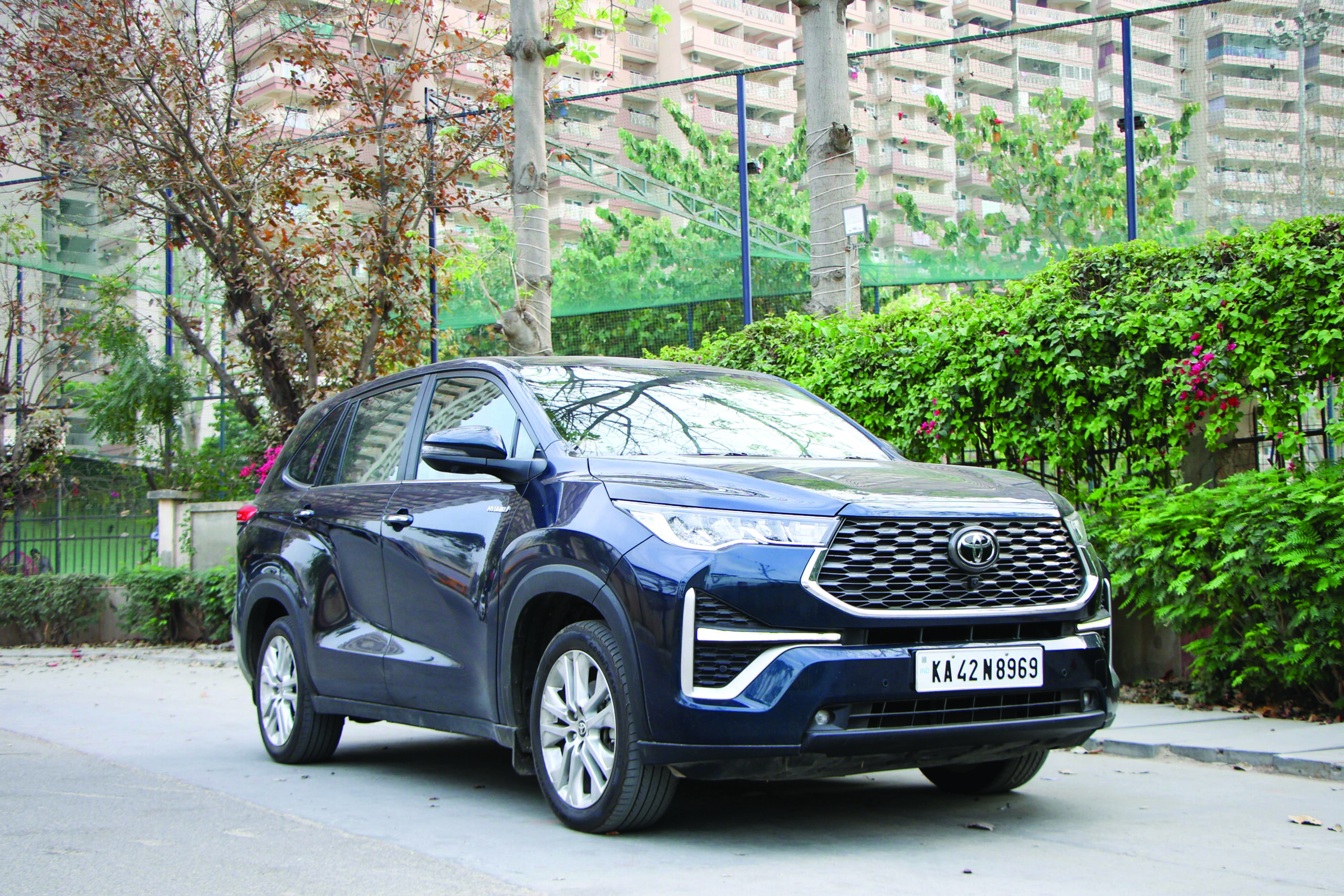
It’s hilarious that despite the Innova being around for almost two decades, no manufacturer has been able to even match, forget bettering, its core attributes of utmost comfort and unquestionable reliability. But, has even Toyota managed to do it with the Hycross? I tested it for a week to find the answer, while also briefly sampling the Crysta 2.8 AT.
Dimensions & Design
The Hycross is longer, wider, and taller than the Crysta. It’s also more SUV than MPV now, especially when viewed head on and from the front three-quarters. Even in profile, it looks closer to the Fortuner than to the Crysta. Rest assured, no one would be waving you down thinking it’s a taxi.
Interiors & Space
The Crysta was itself an improvement over the original Innova, but the Hycross is another level. The interiors feel decidedly premium, and that dashboard, including the center console, is a masterclass in ergonomics. The layout is beautifully uncluttered; there are proper physical buttons for all major features, and everything is within an arm’s reach even if you’re a descendant of the T. Rex.
However, the cabin’s biggest party trick is the second row Ottoman seats that give every luxury vehicle, under a crore, a severe inferiority complex. Plus, thanks to the increased wheelbase, coupled to the endless fore and aft movement range of the second row, Toyota has managed to liberate more space now for the third row passengers.
The cabin illumination is perfect too, but the headlights are downright trash. Also, I’ve seen birthday candles that are brighter than the useless fog lamps on this vehicle. The JBL sound system is great though! Mohd. Rafi fans and Tupac Shakur loyalists—both would be happy.
The Drive
Contrary to what diesel lovers would tell you, this petrol-hybrid Innova has ample performance everywhere in its intended operating range (read: “between 0–150 km/h”). It’s just that you don’t get the sudden kick of a turbo-diesel. The power delivery here is linear, without any spikes, and that’s what you’d want while addressing your team over a zoom call, lounging comfortably in the Ottoman seats. The excellent NVH levels help too. At cruising speeds, the cabin is quieter than young couples’ post midnight mushy phone conversations.
And it’s not a boring affair at the wheel either. It’s quick off the line for such a large vehicle, and there’s zilch planning required for all overtaking maneuvers. It does get loud momentarily when you go pedal to metal, before going silent again as you lift off, realising you’ve left the traffic far behind and have gotten way above the speed limit while at it. An equally fast diesel would forewarn you a lot earlier, by the virtue of noise.
The steering wheel is light, which makes managing this big vehicle a cinch in tight spots, but I expected it to weigh up at least over 80 km/h. Still, high-speed lane changes aren’t fidgety, and there’s the safety net of ADAS as well. Also, the Hycross has a unibody construction, which makes its on-road behaviour way superior to all its ladder-frame competitors’.
The ride quality is good too, but it doesn’t beat bad roads with as much authority as the old Innovas. Conversely, the Hycross has less body roll and side-to-side movement than its older brethren. If you suffer from motion sickness, get the Hycross.
Fuel Efficiency
In traffic, it humiliates the diesels, and teases the Altos. On open roads, it tries to match both. In other words, if you don’t smash the throttle pedal like it were a cockroach, you’ll get 16–20 km/l in town and above 14 km/l on highways.
Verdict
Under a crore, nothing offers the combination of space, comfort, and fuel efficiency as brilliantly as the Hycross does. The only issue is the obnoxious waiting period, which is good for other manufacturers as it lets them sell their flagships in the meantime…















